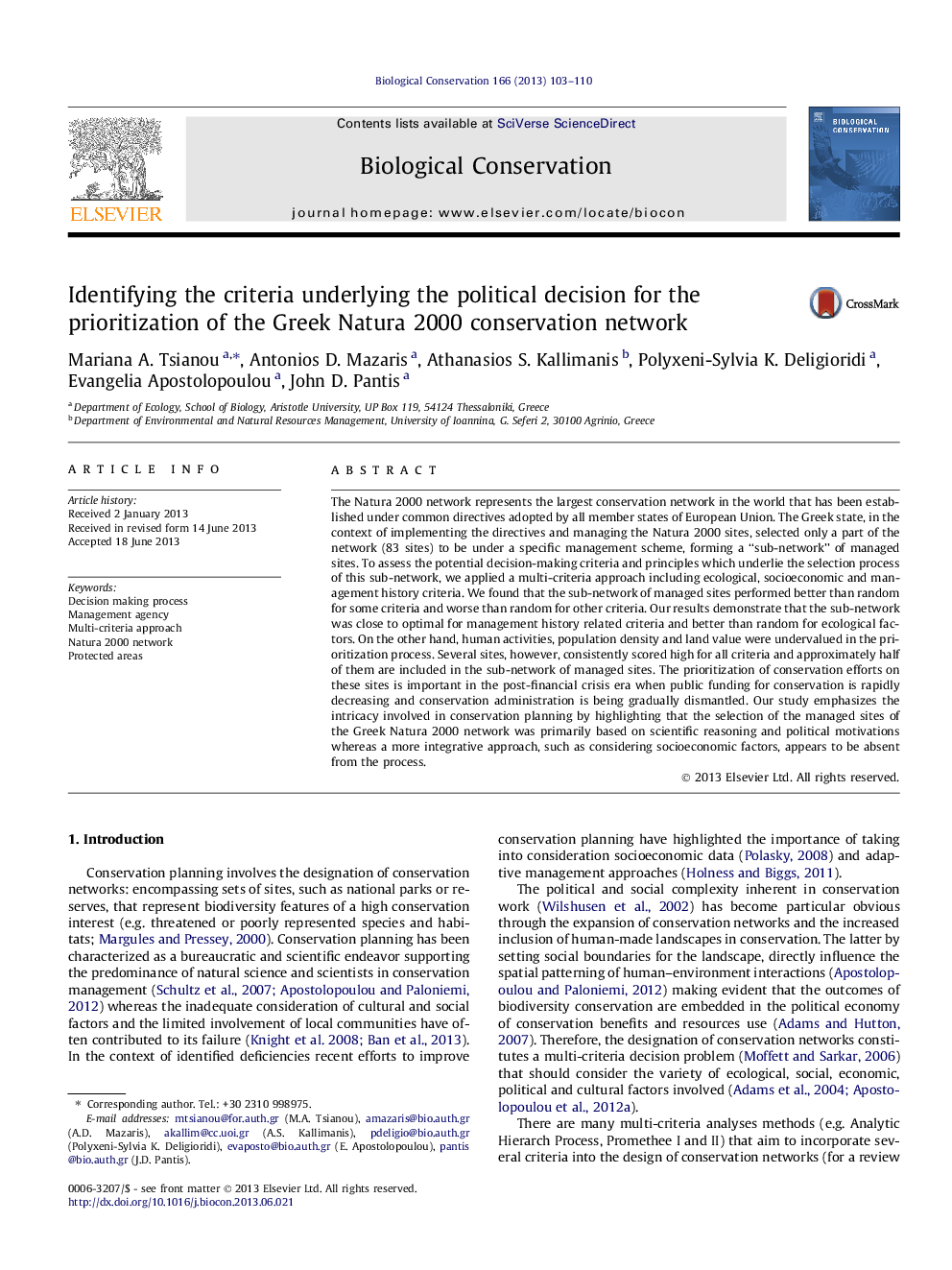| Article ID | Journal | Published Year | Pages | File Type |
|---|---|---|---|---|
| 6300780 | Biological Conservation | 2013 | 8 Pages |
Abstract
The Natura 2000 network represents the largest conservation network in the world that has been established under common directives adopted by all member states of European Union. The Greek state, in the context of implementing the directives and managing the Natura 2000 sites, selected only a part of the network (83 sites) to be under a specific management scheme, forming a “sub-network” of managed sites. To assess the potential decision-making criteria and principles which underlie the selection process of this sub-network, we applied a multi-criteria approach including ecological, socioeconomic and management history criteria. We found that the sub-network of managed sites performed better than random for some criteria and worse than random for other criteria. Our results demonstrate that the sub-network was close to optimal for management history related criteria and better than random for ecological factors. On the other hand, human activities, population density and land value were undervalued in the prioritization process. Several sites, however, consistently scored high for all criteria and approximately half of them are included in the sub-network of managed sites. The prioritization of conservation efforts on these sites is important in the post-financial crisis era when public funding for conservation is rapidly decreasing and conservation administration is being gradually dismantled. Our study emphasizes the intricacy involved in conservation planning by highlighting that the selection of the managed sites of the Greek Natura 2000 network was primarily based on scientific reasoning and political motivations whereas a more integrative approach, such as considering socioeconomic factors, appears to be absent from the process.
Related Topics
Life Sciences
Agricultural and Biological Sciences
Ecology, Evolution, Behavior and Systematics
Authors
Mariana A. Tsianou, Antonios D. Mazaris, Athanasios S. Kallimanis, Polyxeni-Sylvia K. Deligioridi, Evangelia Apostolopoulou, John D. Pantis,
